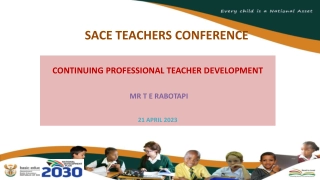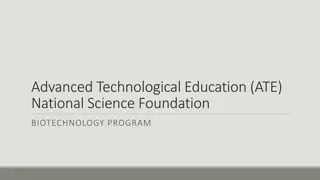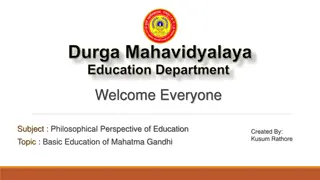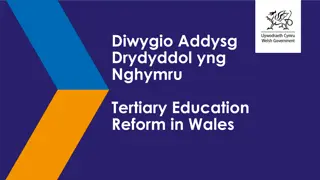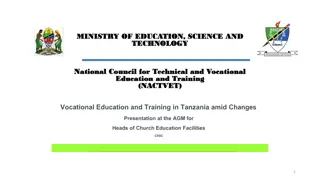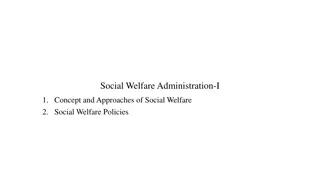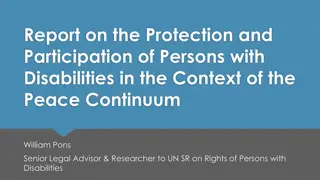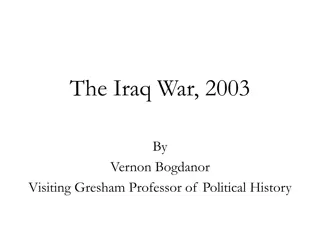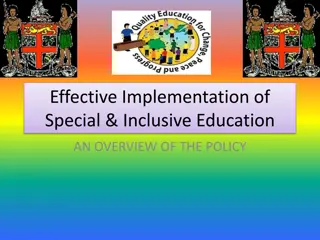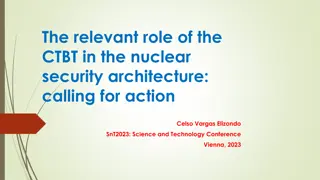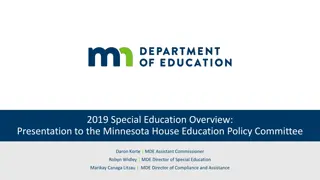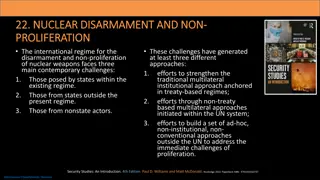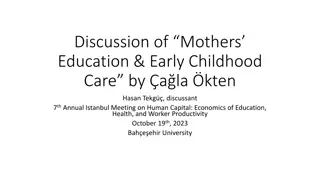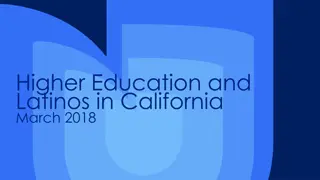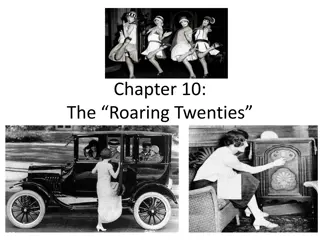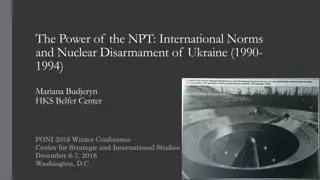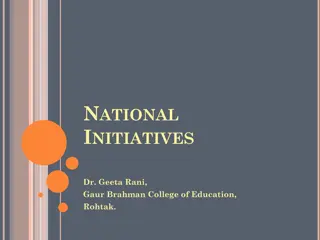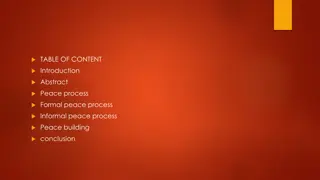DISARMAMENT EDUCATION
The United Nations study on Disarmament and Non-Proliferation Education focuses on revitalizing efforts in disarmament education, addressing new elements like non-proliferation, small arms control, and gender perspectives on security. It includes 34 recommendations for governments, regional organizations, and civil society to collaborate on enhancing peace education.
Download Presentation

Please find below an Image/Link to download the presentation.
The content on the website is provided AS IS for your information and personal use only. It may not be sold, licensed, or shared on other websites without obtaining consent from the author.If you encounter any issues during the download, it is possible that the publisher has removed the file from their server.
You are allowed to download the files provided on this website for personal or commercial use, subject to the condition that they are used lawfully. All files are the property of their respective owners.
The content on the website is provided AS IS for your information and personal use only. It may not be sold, licensed, or shared on other websites without obtaining consent from the author.
E N D
Presentation Transcript
DISARMAMENT EDUCATION BY MISS OPURUM IJEOMA and AKIRI DAVID
UNITED NATIONS STUDY ON DISARMAMENT AND NON-PROLIFERATION EDUCATION- REPORT OF THE SECRETARY- GENERAL After two years of preparation, the United Nations study on Disarmament and Non-Proliferation Education(A57/124) was submitted to the First Committee of the General Assembly at its 57th session on 9th October 2002.
The study builds upon and seeks to revitalize past efforts at disarmament education, which it considers an integral part of peace education. It tackles new elements such as the growth in the significance of non-proliferation of weapons of mass destruction and small arms, as well as gender perspectives on security issues.
Its main contribution was the 34 recommendations for actions to be taken by governments, regional organizations, the UN and other international organizations, municipal and religious leaders. I t also seeks to establish close collaboration between the experts and civil society, including educators and academic institutions mainly at the secondary and tertiary levels of education.
FIRST BIENNIAL REPORT OF THE SECRETARY GENERAL ON DISARMAMENT AND NON- PROLIFERATION EDUCATION The First Biennial Report of thr Secretary General on Disarmament and Non-Proliferation Education(A/59/178) was submitted to the 59th session of the General Assembly on the implementation of the recommendations of the UN study on disarmament and non-proliferation education gives information received from Member States, other international organizations , and non-governmental organizations.
Among the many initiatives reported the Secretary General, one conceived and carried out by students in N'Guigmi, Niger, in April 2004 stands out Symbolic of the arms collection projects under way by the UN Development Programme in their country, students organized a collection not of guns, but knives, from their fellow students and invited teachers and community members to participate in a Flame of Peace ceremony in the report
SECOND BIENNIAL REPORT OF THE SECRETARY GENERAL ON DISARMAMNET AND NON-PROLIFERATION EDUCATION The Second Biennial Report of the Secretary General on Disarmament and Non-Proliferation Education(A/61/169) was submitted to the 61st session of the General Assembly to reviewthe implementation of the recommendations of the UN study on disarmament and non-proliferation education and possible new promotional opportunities. The report includes greater depth of information on disarmament and non-proliferation education activities by governments, international and non-governmental organizations, educators, students and members of civil society.
Given the high number of submissions received by civil society organizations, only summaries were included in the report.
THIRD BIENNIAL REPORT OF THE SERATARY GENERAL ON DISARMAMENT AND NON- PROLIFERATION EDUCATION The Third Biennial Report of the Secretary General on Disarmament and Non-Proliferation Education(A/63/158) was submitted to the 63rd session of the General Assembly to review the implementation of recommendations of the UN on study of disarmament and non-proliferation education. Given the high number of submissions received by the civil society organizations, only summaries were included in the report.
FOURTH BIENNIAL REPORT OF THE SECRETARY GENERAL ON DISARMAMENT AND NON-PROLIFERATION EDUCATION. The Third Biennial Report of the Secretary General on Disarmament and non-proliferation(A/65/160) was submitted to the 65th session of the General Assembly to review the implementations of the recommendations of the UN study on disarmament and non-proliferation education. . Given the high number of submissions received by the civil society organizations, only summaries were included in this report.
FIFTH BIENNIAL REPORT OF THE SECRTARY GENERAL ON DISARMAMENT AND NON- PROLIFERATION EDUCATION. The Fifth Biennial Report of the Secretary General on Disarmament and Non-Proliferation Education (A/67/138) was submitted to the 67th session of the General Assembly to review the implementation of the recommendation of the UN on the study of disarmament and non- proliferation education. Given the high number of submissions received by the civil society organizations, only summaries were included in this report.
SIXTH BIENNIAL REPORT OF THE SECRETARY GENERAL ON DISARMAMENT AND NON- PROLOFERATION EDUCATION. The Sixth Biennial Report the Secretary General on Disarmament and Non-Proliferation Education (A/69/113) was submitted to the 69th session of the General Assembly to review the implementation of the recommendations of the UN study on disarmament and non-proliferation education. . Given the high number of submissions received by the civil society organizations, only summaries were included in this report.
SEVENTH BIENNIAL REPORT OF THE SECRETARY GENERAL ON DISARMAMENT AND NON-PROLIFERATION EDUCATION. The Seventh Biennial Report of the Secretary General General on Disarmament and Non- Proliferation Education (A/71/124) was submitted to the 71st session of the General Assembly to review the implementation of the recommendations of the UN on the study of disarmament and non-proliferation education. Given the high number of submissions received by the civil society organizations, only summaries were included in the report.
INITIATIVES BY THE UN ON DISARMAMENT AND NON-PROLIFERATION EDUCATION. POSTER for PEACE: In partnership with the Office of the President of the General Assembly of the UN, the UN Foundation, the World Federation of the UN and United Nations Academic Impact. UNODA organized the Poster for Peace contest to raise awareness of the need for nuclear disarmament and to inspire citizens across the globe to use their artistic talents to promote a world free of nuclear weapons.
The contest was created to commemorate the seventieth anniversary of the first UN General Assembly resolution, adopted on 24 January 1946, which established the goal of eliminating atomic weapons and all other major weapons of mass destruction.
ART for PEACE: The Art for Peace (February- April 2012) was co-sponsored by the UN Office for Disarmament Affairs and the Harmony for Peace Foundation. . The contest was administered entirely on-line. It provided a platform for children and teen the world over to use their creative talents to imagine a World Free of Nuclear Weapons, to be agents of change who would demonstrate their capacity and make their mark using their imaginations, their paintbrushes, and the power of the internet.
. During the contest period, there was 6,623 entries from children and teens from 92 countries. An award ceremony was held on 23 October 2012 at the UN with the Secretary General.
POETRY for PEACE: In 2011, a social media Poetry for Peace contest invited the world to hear the testimonies of atomic bomb survivors, called HIBAKUSHA, and respond to their stories in verse. Seven hundred and forty-one poems were submitted, some echoing the pain of the victims, others calling for nuclear disarmament and almost crying out for peace. The contest brought poets from all over the world together for the sake of peace. Three winners were announced on 25th October at a ceremony at the UN Headquarters in New York.
UNDIR DISARMAMENT FORUM- EDUCATION FOR DISARMAMENT. A special edition of Disarmament Forum is dedicated to an exploration of previous disarmament education initiatives and potential future directions. Looking broadly at peace education and disarmament education as well as formal education and non-formal activities, it focuses on the question of "what sort of education" and "for whom". This publication contains contributions from some of the most respected thinkers in the field.
WOMEN WAR PEACE Women. War and Peace, sponsored by UNWomen is intended to address the lack of consolidated data on the impact of armed conflict on women and girls as noted by Security Council resolution 1325(2000). By no means exhaustive, it is meant to serve as a centralized repository of information from a wide variety of sources, with references to reports and data from the UN system along with information and analysis from experts, academics, NGOs and media sources.
CULTURE OF PEACE (UNESCO) As defined by the UN, the Culture of Peace is a set of values, attitudes, modes of behaviour and ways of life that reject violence and prevent conflicts by tackling dialogue and negotiation among individuals, groups and nations. (UN Resolutions A/RES/52/13, Culture of Peace; and A/RES/53/243, Declaration and Programme of Action on a Culture of Peace).
PEACE EDUCATION IN UNICEF UNICEF believes that Peace Education is an essential component of quality basic education. The document defines peace education as the process of promoting the knowledge, skills, attitudes and values needed to bring about behaviour changes that will enable children, youth and adults to prevent conflict and violence, both overt and structural; to resolve conflict peacefully; and to create the conditions conducive to peace, at all levels: intra- personal, inter-personal, inter-group, national and international.
UNIVERSITY FOR PEACE University for Peace was established in December 1980 as a Treaty Organization by the UN General Assembly. As determined in the Charter of the University and endorsed by the UPEACE Council, the mission of the University for Peace is: "to provide humanity with an international institution of higher education for peace with the aim of promoting among all human beings the spirit of understanding, tolerance and peaceful coexistence, to stimulate cooperation among peoples and to help lessen obstacles and threats to world peace and progress, in keeping with the noble aspirations proclaimed in the Charter of the UN".
OPANAL'S INTERNATIONAL SEMINAR A world free of nuclear weapons: is it possible? how could it be achieved? An exchange of views by some leading experts. On February 2017, a few weeks before the negotiations of the Treaty on the Prohibition of Nuclear Weapons at the UN, the Agency for the Prohibition of Nuclear Weapons in Latin America and the Caribbean (OPANAL) held an International Seminar on the question of nuclear weapons. The seminar was organized in two panels. The first panel considered the current strategic context at a global level which is closely linked to nuclear weapons.
. The second panel dealt with nuclear disarmament in its various aspects. Twelve renowned experts from twelve different countries participated, including Dr. William J. Perry, former Secretary of Defence of the US and Ms. Beatrice Fihn, Executive Director of the International Campaign to Abolish Nuclear Weapons (ICAN) that was awarded the Nobel Peace Prize this year. The twelve panellists brought a broad range of views ; some of them in favour of nuclear weapons as a means of security and in favour of the prohibition and elimination of nuclear weapons.
The seminar included high- level officials such as the Director General of the Department of Arms Control and Disarmament of the People's Republic of China, as well as world- renowned scholars that participated in the debates.
DISSERTATION AN NON-GOVERNMENTAL ORGANIZATIONS AND THE 1978 UN SPECIAL SESSION ON DISARMAMENT. Written by David Atwood in 1982 as his thesis for his doctoral degree(1982) from the University of North Carolina and donated to the UN. Though recently retired, Dr. Atwood has been char of the Acronym Institute and on its Board since 2006. From 2004 to 2011 he served as Director of the Quaker UN Office (QUNO) Geneva and from 1995-2011 as QUNO's Disarmament and Representative.
He holds a PhD . Political Science from the University of North Carolina. He is a co-founder of the Geneva Forum and the Geneva Peace building Platform. Dr Atwood served as Senior Advisor to the Small Arms Survey in Geneva from 2011-2015. He was the General Secretary of the International Fellowship of Reconciliation (1988- 1994).
RESOURCE GUIDE ON NUCLEAR DISARMAMENT FOR RELIGIOUS LEADERS AND COMMUNITIES. This Resource Guide for Religious Leaders and Communities, published by Religions for Peace, provides practical examples of nuclear disarmament actions by religious communities as well as appropriate information and resources to support faith-based and interfaith reflection and action. The Resource Guide highlights common values of all major religious faiths that are applicable to the threat of nuclear weapons. It focuses on special roles of religious believers, including women and youth, and positive actions they can take to break down the walls of nuclear terror and build co-operative human security for a nuclear weapon free world.
FIVE MYTHS ABOUT NUCLEAR WEAPONS . Five Myths About Nuclear Weapons by Ward Wilson, a senior fellow at the British American Security Information Council (BASIC), is a ground-breaking exposition of the pragmatic reasons why nuclear weapons are both not very good weapons and dangerous weapons. The moral arguments against nuclear weapons have never been in doubt. The question has always been whether necessity overrode moral qualms. Five Myths About Nuclear Weapons destroys the most popular reasons for keeping nuclear weapons.
ACTION FOR DISARMAMENT: 10 THINGS YOU CAN DO! In collaboration with the UN Department of Public Information , the UN Office for Disarmament Affairs has launched a publication entitled " Action for Disarmament: 10 things you can do!". !". The book is written for secondary school students and first-years university students and aims to draw the attention of young people around the world to the promotion of international peace. It offers 10 practical steps o help young people mobilize, act and promote the disarmament ideals of the UN throughout their schools, their communities and beyond.
DISARMAMENT: A BASIC GUIDE. Why is disarmament important? Global Arms Expenditures, Nuclear Weapons, the Nuclear Non-Proliferation Treaty, Chemical Weapons, Biological Weapons etc. Published by the Office for Disarmament Affairs,, this guide explains basic disarmament issues in terms that adults as well as high school students can understand.
REFERENCES; www.un.org/disarmament/education.com. UN Biennial Reports on Disarmament Education.



